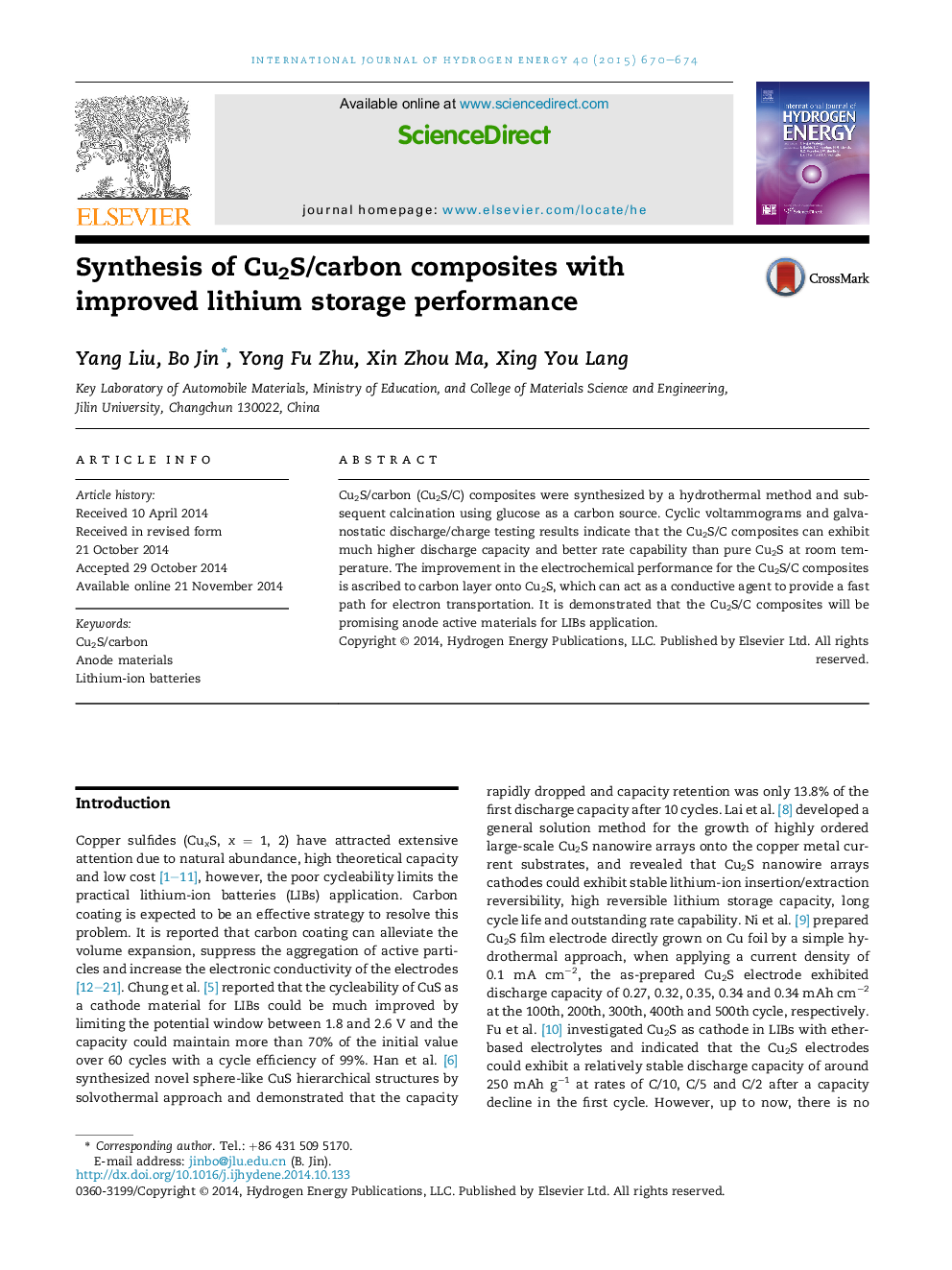| Article ID | Journal | Published Year | Pages | File Type |
|---|---|---|---|---|
| 7717330 | International Journal of Hydrogen Energy | 2015 | 5 Pages |
Abstract
Cu2S/carbon (Cu2S/C) composites were synthesized by a hydrothermal method and subsequent calcination using glucose as a carbon source. Cyclic voltammograms and galvanostatic discharge/charge testing results indicate that the Cu2S/C composites can exhibit much higher discharge capacity and better rate capability than pure Cu2S at room temperature. The improvement in the electrochemical performance for the Cu2S/C composites is ascribed to carbon layer onto Cu2S, which can act as a conductive agent to provide a fast path for electron transportation. It is demonstrated that the Cu2S/C composites will be promising anode active materials for LIBs application.
Keywords
Related Topics
Physical Sciences and Engineering
Chemistry
Electrochemistry
Authors
Yang Liu, Bo Jin, Yong Fu Zhu, Xin Zhou Ma, Xing You Lang,
